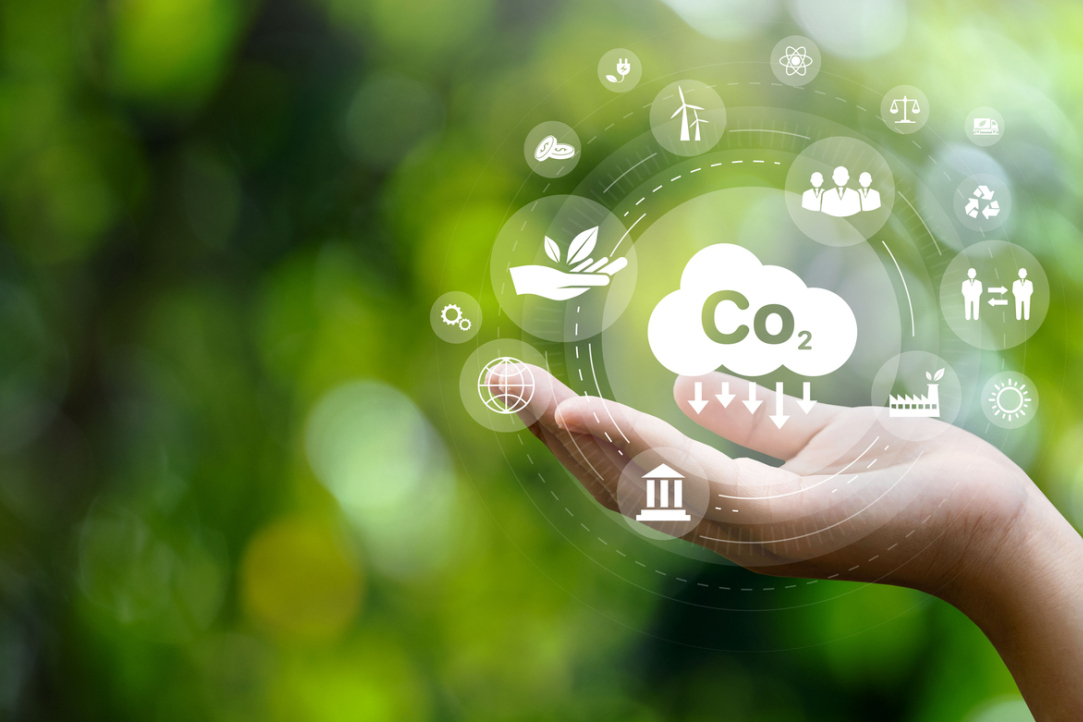Low-Carbon Exports Reduce CO2 Emissions

Researchers at the HSE Faculty of Economic Sciences and the Federal Research Centre of Coal and Coal Chemistry have found that exporting low-carbon goods contributes to a better environment in Russian regions and helps them reduce greenhouse gas emissions. The study results have been published in R-Economy.
Yuri Simachev and Anna Fedyunina from the HSE Faculty of Economic Sciences, in collaboration with Sergey Nikitenko from the Federal Research Centre for Coal and Coal Chemistry, analysed the impact of Russian regions' trade in low-carbon goods (LCGs) on CO₂ emissions. LCGs include solar, wind, and hydrogen energy systems, energy-efficient industrial equipment, electric vehicles, and more.
The researchers analysed data from the Federal Customs Service, Rosstat, and the Central Bank of Russia from 2016 to 2021, examining the structure of international trade, CO₂ emissions across regions, gross regional product (GRP), investments, and other economic development indicators. For the study, the regions were categorised into quantiles based on the volume of low-carbon goods exported and imported.
The greatest volumes of LCG exports were found in regions with advanced industrial development, including the Ural Federal District (3.2% of total exports), the Siberian Federal District (2.1%), and the Southern Federal District (2.2%). The Far Eastern Federal District (1.6%) and the Central Federal District (1.1%) were identified as leading importers of LCGs.
The analysis revealed a nonlinear impact of low-carbon goods trade on CO₂ emissions, forming a U-shaped relationship between trade volume and emission reductions. In the initial stages, increased exports help reduce emissions by introducing innovative technologies and enhancing energy efficiency. However, over time, the trend changes, and emissions decrease at a slower rate.
Regions with low export levels, classified in the first and second quantiles, include the republics of the North Caucasus, the oil-producing regions of the Urals, and southern Russia. In these regions, a 1% increase in LCG exports results in a 0.13–0.19% reduction in CO₂ emissions.
In regions with advanced manufacturing industries, such as the Ulyanovsk and Novgorod regions, Tatarstan, and Bashkortostan, this effect is most pronounced, with each percentage increase in exports associated with a 0.23–0.29% decrease in emissions. Once per capita exports of low-carbon goods in a region exceed approximately 2,500 roubles, the reduction in emissions slows to 0.18%, as seen in Moscow, St Petersburg, and the Sverdlovsk region. The reason is that an excessive volume of LCGs in the export structure leads to market saturation in the long term, while further increases in trade are not matched by equivalent investments in the modernisation of production facilities.
In contrast, LCG imports have little to no effect on emissions. Only in regions with the highest share of LCG imports in trade turnover does a 1% increase in imports lead to a 0.19% reduction in CO₂ emissions.
Thus, the study highlighted significant regional differences that should be considered when developing industrial policies. To optimise the impact of emission reductions, it is essential to encourage the export of low-carbon technology goods in regions with a strong industrial base, promote innovative production, and consider the specific characteristics of the regional economy. The state is already actively supporting this sphere.

Anna Fedyunina
The co-authors have begun analysing measures to regulate international trade in non-carbon technologies, with tariff regulation being the most common approach. They emphasise that in Russia, these measures should consider the country's specific characteristics. 'Russia actively imports technological equipment for the production of low-carbon goods; therefore, trade liberalisation measures are focused on reducing the tax burden on imports. This includes expanding the list of imported equipment exempt from value-added tax. Additionally, Russia's priority is to increase export competitiveness. In this regard, subsidising after-sales services has become the primary tool for supporting exporters,' explains Anna Fedyunina, Assistant Professor at the HSE Faculty of Economic Sciences.
See also:
Scientists Test Asymmetry Between Matter and Antimatter
An international team, including scientists from HSE University, has collected and analysed data from dozens of experiments on charm mixing—the process in which an unstable charm meson oscillates between its particle and antiparticle states. These oscillations were observed only four times per thousand decays, fully consistent with the predictions of the Standard Model. This indicates that no signs of new physics have yet been detected in these processes, and if unknown particles do exist, they are likely too heavy to be observed with current equipment. The paper has been published in Physical Review D.
HSE Scientists Reveal What Drives Public Trust in Science
Researchers at HSE ISSEK have analysed the level of trust in scientific knowledge in Russian society and the factors shaping attitudes and perceptions. It was found that trust in science depends more on everyday experience, social expectations, and the perceived promises of science than on objective knowledge. The article has been published in Universe of Russia.
Scientists Uncover Why Consumers Are Reluctant to Pay for Sugar-Free Products
Researchers at the HSE Institute for Cognitive Neuroscience have investigated how 'sugar-free' labelling affects consumers’ willingness to pay for such products. It was found that the label has little impact on the products’ appeal due to a trade-off between sweetness and healthiness: on the one hand, the label can deter consumers by implying an inferior taste, while on the other, it signals potential health benefits. The study findings have been published in Frontiers in Nutrition.
HSE Psycholinguists Launch Digital Tool to Spot Dyslexia in Children
Specialists from HSE University's Centre for Language and Brain have introduced LexiMetr, a new digital tool for diagnosing dyslexia in primary school students. This is the first standardised application in Russia that enables fast and reliable assessment of children’s reading skills to identify dyslexia or the risk of developing it. The application is available on the RuStore platform and runs on Android tablets.
Physicists Propose New Mechanism to Enhance Superconductivity with 'Quantum Glue'
A team of researchers, including scientists from HSE MIEM, has demonstrated that defects in a material can enhance, rather than hinder, superconductivity. This occurs through interaction between defective and cleaner regions, which creates a 'quantum glue'—a uniform component that binds distinct superconducting regions into a single network. Calculations confirm that this mechanism could aid in developing superconductors that operate at higher temperatures. The study has been published in Communications Physics.
Neural Network Trained to Predict Crises in Russian Stock Market
Economists from HSE University have developed a neural network model that can predict the onset of a short-term stock market crisis with over 83% accuracy, one day in advance. The model performs well even on complex, imbalanced data and incorporates not only economic indicators but also investor sentiment. The paper by Tamara Teplova, Maksim Fayzulin, and Aleksei Kurkin from the Centre for Financial Research and Data Analytics at the HSE Faculty of Economic Sciences has been published in Socio-Economic Planning Sciences.
Larger Groups of Students Use AI More Effectively in Learning
Researchers at the Institute of Education and the Faculty of Economic Sciences at HSE University have studied what factors determine the success of student group projects when they are completed with the help of artificial intelligence (AI). Their findings suggest that, in addition to the knowledge level of the team members, the size of the group also plays a significant role—the larger it is, the more efficient the process becomes. The study was published in Innovations in Education and Teaching International.
New Models for Studying Diseases: From Petri Dishes to Organs-on-a-Chip
Biologists from HSE University, in collaboration with researchers from the Kulakov National Medical Research Centre for Obstetrics, Gynecology, and Perinatology, have used advanced microfluidic technologies to study preeclampsia—one of the most dangerous pregnancy complications, posing serious risks to the life and health of both mother and child. In a paper published in BioChip Journal, the researchers review modern cellular models—including advanced placenta-on-a-chip technologies—that offer deeper insights into the mechanisms of the disorder and support the development of effective treatments.
Using Two Cryptocurrencies Enhances Volatility Forecasting
Researchers from the HSE Faculty of Economic Sciences have found that Bitcoin price volatility can be effectively predicted using Ethereum, the second-most popular cryptocurrency. Incorporating Ethereum into a predictive model reduces the forecast error to 23%, outperforming neural networks and other complex algorithms. The article has been published in Applied Econometrics.
Administrative Staff Are Crucial to University Efficiency—But Only in Teaching-Oriented Institutions
An international team of researchers, including scholars from HSE University, has analysed how the number of non-academic staff affects a university’s performance. The study found that the outcome depends on the institution’s profile: in research universities, the share of administrative and support staff has no effect on efficiency, whereas in teaching-oriented universities, there is a positive correlation. The findings have been published in Applied Economics.


